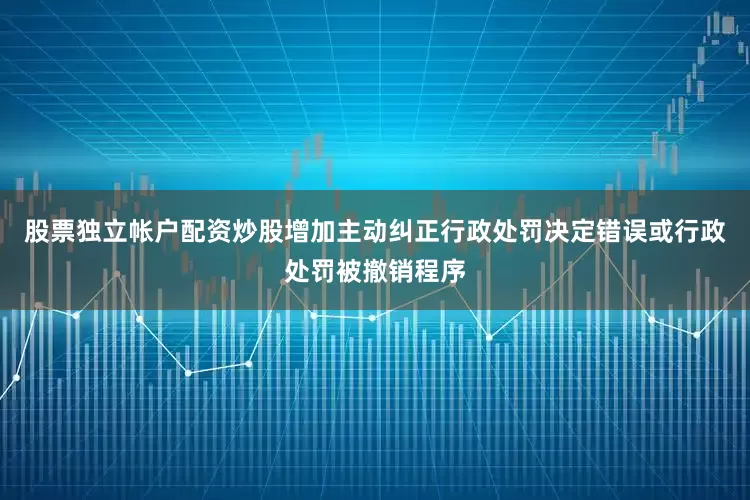
靶向蛋白降解 (TPD) 是一种创新疗法,它基于细胞自身的蛋白质清除机制,能够选择性地降解致病蛋白,对治疗难治性和其他疾病具有非凡的潜力。
近期,这是一款潜在的“first-in-class”口服PROTAC®(蛋白水解靶向嵌合体,一种TPD),用于针对特定的患者。如果获得批准,这将意味着一种突破性疗法的问世,有望在未来改写许多疾病的治疗方式。
作为全球化CRDMO平台,早在此类新分子刚刚起步之时,就前瞻性地布局了相关能力和技术,并积累了大量成功经验。迄今为止,药明康德已与150多家公司在TPD化合物开发的各个阶段开展合作,全球每三家开发TPD候选药物的公司中,就有两家是药明康德的合作伙伴。
•TPD疗法为何具有突破性?
•开发TPD疗法有哪些困难和挑战?
•药明康德如何助力PROTAC及其他TPD疗法的研发?
•对创新药企而言,找对合作伙伴到底有多重要?
近日,药明康德联席首席执行官杨青博士与权威行业媒体STAT对谈,分享了他对TPD如何改写癌症和其他疾病治疗前景的洞见,并对一体化CRDMO平台在加速此类药物研发方面的作用进行了深度解读。
以下是对话全文。

STAT:在您看来,为什么靶向蛋白降解(TPD)疗法如此具有突破性?
杨青博士:以PROTAC®为代表的TPD疗法的突破性在于,其能够打破传统小分子药物的局限,从而克服此前被认为“不可成药”的靶点。
自PROTAC®技术问世以来,研究人员已经利用相似的(诱导接近)策略,开发出多种创新TPD结构,包括AUTAC(自噬靶向嵌合小分子)、LYTAC(溶酶体靶向嵌合体)和RIPTAC(调节诱导接近靶向嵌合体)等。它们通过连接不同功能的分子,从而产生组合治疗的效果。这些新方法在治疗癌症、神经系统疾病和其他疑难病症方面展现出了巨大的潜力。
STAT:在助力TPD疗法从创新概念走向临床验证的过程中,药明康德扮演了怎样的角色?
杨青博士:药明康德致力于支持全球客户加速研发进程,从小型和新锐生物技术公司(biotech)到大型药企,我们的CRDMO平台能够“端到端”助力TPD分子从发现、到开发,再到生产交付的全过程。凭借全面综合的能力,我们能将有潜力的创新想法高效、高质量地转化为现实。
目前,药明康德已合成了超过188,000种复杂的TPD化合物,其中70多种已进入临床前候选药物(PCC)阶段,10多种已进入后期开发阶段。
STAT:蛋白降解疗法通常面临制剂、稳定性、递送等方面的挑战。药明康德如何应对这些挑战,助力这些创新疗法更快造福患者?
杨青博士:TPD分子结构复杂庞大,的确在合成、靶标结合、稳定性和生物利用度等方面存在多重挑战。这种复杂性可能会让许多初创biotech公司难以应对。由于科学家人数、时间和资金等资源有限,biotech公司要想将创新TPD分子推进至下一个里程碑,往往困难重重。
因此,越来越多的新锐公司依赖药明康德这样的一体化CRDMO平台。这样的好处显而易见:初创公司无需从零开始自建基础设施,还能充分依托我们在药物发现、开发和生产方面的全链条经验。这种合作关系有助于提升研发效率,加速新药开发进程,控制研发成本,新锐biotech公司可以更加专注于科学创新,同时严格保有其核心知识产权(IP)。

STAT:您能否再举几个例子,说明这种合作模式是如何运转的?
杨青博士:当然。之前有一位biotech合作伙伴找到我们,希望我们能够合成一种复杂的TPD分子,合成步骤达到24步。
我们的一个团队重新设计了合成路线,将合成步骤缩短了三分之一,并且减少使用了一种昂贵的催化剂。同时,另一个团队使用并优化喷雾干燥(SDD)技术进行制剂制备,显著提高生物利用度,为后续临床应用奠定了坚实的基础。内部无缝衔接的流程使我们的生产团队提前两个月生产出客户所需。
可以再分享一个例子。有一位客户找到我们,询问我们能否完成一项简直“不可能”的任务:在30天内合成一个复杂的分子。我们立即动员组建了一支由40名化学家组成的“攻坚”小队,通过接力协作,对多轮放大生产进行实时验证,大幅简化流程,最终在短短29天内交付。
这些故事只是药明康德一体化平台助力全球创新者加速新药研发的“冰山一角”而已。
STAT:听起来,高效的合作和一体化平台整合对于快速推进此类复杂项目至关重要。如果是一家初创公司,要独自完成这些工作将极具挑战性。
杨青博士:确实如此。新药研发是一场漫长的征程,需要大胆的科学突破,创新转化也至关重要。从一个概念的提出,到最终真正惠及患者,我们需要的不仅是科学本身,更需要合作、效率和规模。这正是药明康德一体化平台所提供的价值。
The End of the Undruggable: Targeted Protein Degradation Therapies Open New Frontiers in Cancer Care
Targeted protein degradation (TPD) therapy is a promising new class of targeted treatments. Based on a cell’s natural mechanism for eliminating diseased proteins, this therapy can combat hard-to-treat cancers and other conditions.
The U.S. Food and Drug Administration is currently reviewing a New Drug Application for vepdegestrant, a pioneering PROTAC® (PROteolysis TArgeting Chimera, a type of TPD) molecule targeting certain breast cancer. The medication, which was developed by Arvinas in partnership with Pfizer, is the first PROTAC® therapy to be submitted for regulatory review. If approved, this treatment would represent a breakthrough approach that could change the way many diseases are treated.
WuXi AppTec, a global Contract Research, Development, and Manufacturing Organization (CRDMO), is one of the most experienced enablers in this space. It has partnered with more than 150 companies on all stages in development of targeted protein degrader compounds, working with two out of every three companies developing TPD candidates.
WuXi AppTec Co-CEO Steve Yang offers his perspective on how targeted protein degraders could revolutionize treatment of cancer and other diseases and describes the role that CRDMOs play in speeding development of such drug candidates.
STAT: From your perspective, what makes these therapies so transformative?
Steve Yang:TPDs such as PROTAC®s are designed to break some of the major barriers of traditional small molecule drugs, thus targeting previously “un-druggable” proteins.
Since PROTAC®s were developed, researchers have created several new versions of TPDs —such as AUTACs, LYTACs, and RIPTACs—that use a similar strategy. They all bring two proteins close together to produce a therapeutic effect. These new approaches are showing great promise in treating cancer, neurological diseases, and other difficult health conditions.
STAT: What role has WuXi AppTec played in helping to bring targeted protein degradation from concept to clinic?
Steve Yang:WuXi AppTec supports customers from small and emerging biotechs to large pharmas in advancing their pioneering TPD projects across all stages of our CRDMO platform -- from discovery to development and delivery. These comprehensive capabilities enable us to help transform promising ideas into reality with speed and quality.
WuXi AppTec has synthesized more than 188,000 complex targeted protein degrader (TPD) compounds, with more than 70 advancing to preclinical candidate (PCC) status and over 10 entering late-stage development.
STAT: Protein degradation therapies often face hurdles with formulation, stability, and delivery. How is your team addressing these obstacles to help make these therapies more viable for patients?
Steve Yang:These molecules are structurally large and intricate, posing challenges in synthesis, target binding, stability, and bioavailability. Such complexity can overwhelm many biotech startups. With only a handful of scientists and limited time and funding, moving a novel degrader toward the next milestone can be daunting.
Early-stage companies are increasingly leaning on integrated CRDMOs like WuXi AppTec. The appeal is clear: rather than build infrastructure from scratch, startups can focus on science and innovation while leveraging our depth in discovery, development, and manufacturing. Such partnerships improve efficiency, speed development and controls costs, while allowing biotechs to focus on scientific innovation and maintain tight control over their IP.

STAT: Can you provide some examples that illustrate how this works?
Steve Yang:Sure. One biotech partner came to us with a complex molecule that required 24 synthetic steps to manufacture. The company came to us to produce enough of that material to hit its next milestone.
One of our teams redesigned the synthesis process, reducing the number of steps by a third and eliminated the need to use a costly catalyst. Another team simultaneously developed a spray-dried dispersion formulation that improved bioavailability to meet the clinical requirement. That seamless collaboration allowed our manufacturing team to produce the required materials two months ahead of schedule.
Another client approached us asking if we could complete an “impossible” assignment: synthesize a complex molecule within 30 days. We mobilized a \"SWAT” team of 40 chemists who worked around the clock in rotating shifts. They validated multiple rounds of scale-up in real time, streamlined the processes and delivered the needed material in just 29 days. These are a few examples of how WuXi AppTec’s integrated platform helps accelerate drug development for global innovators.
STAT: Effective collaboration and integration sound critical for advancing such complex projects smoothly and swiftly. It will be challenging for a startup to do that on their own.
Steve Yang:That’s right. In a space defined by long timelines and bold science, translation is everything. From idea to impact, it takes more than science—it takes collaboration, speed, and scale. That’s what we’re here to deliver.
Learn more about how new modalities translate from discovery to delivery: https://www.wuxiapptec.com/platform
免责声明:本文仅作信息交流之目的,文中观点不代表药明康德立场,亦不代表药明康德支持或反对文中观点。本文也不是治疗方案推荐。如需获得治疗方案指导,请前往正规医院就诊。
版权说明:欢迎个人转发至朋友圈,谢绝媒体或机构未经授权以任何形式转载至其他平台。转载授权请在「药明康德」微信公众号回复“转载”,获取转载须知。
简配资-简配资官网-配资专业炒股配资网站-配资平台提供咨询提示:文章来自网络,不代表本站观点。


